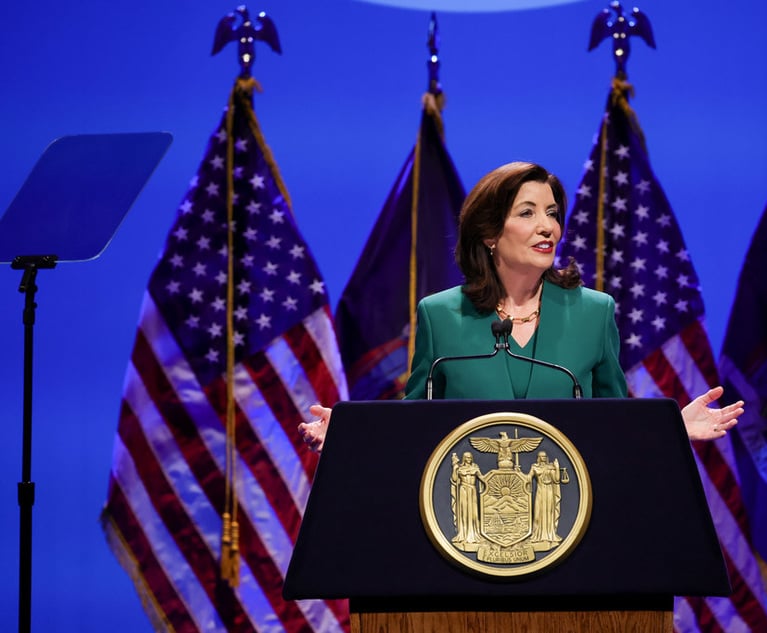 Photo: Blue Planet Studio via Adobe Stock
Photo: Blue Planet Studio via Adobe Stock Reexamining Line-by-Line Confidentiality Designations: A Cost-Effective and Cooperative Approach
While line-by-line designations may make a lot of sense for smaller cases, for larger matters where only a small fraction of the documents reviewed and produced are ever used in motions or trial, parties should focus the expense of line-by-line designations on the documents that really matter.
February 10, 2022 at 02:30 PM
8 minute read
In recent years, jurisdictions like Washington and California have required or encouraged line-by-line confidentiality designations. Under the Western District of Washington Local Rule 26(c)(2), for example, parties may file protective orders to protect confidential information only if "its protection from public disclosure and use extends only to the limited information or items that are entitled to confidential treatment under the applicable legal principles …" Furthermore, parties are encouraged to use the district's model protective order, which requires parties to clearly identify the "portion(s)" of a document that are confidential in their productions. Model Stipulated Protective Order, W.D. Wa. Similarly, the Northern, Southern, and Central districts of California encourage parties to use model protective orders that explicitly prohibit mass confidentiality designations and require parties to designate "only those parts of material, documents, items" that qualify for protection, and thereby prohibiting "mass, indiscriminate, or routinized designations." See, e.g., Model Protective Order, N.D. Cal. Because some courts require parties seeking to deviate from the model order to show good cause, parties may be reluctant to negotiate less narrow confidentiality restrictions.
This trend has reached New York to varying degrees as well. In New York federal courts, some judges have adopted model protective orders that require parties to designate the portion(s) of a document that require protection. By contrast, in New York state, the Commercial Division's model protective order explicitly permits parties to designate "any document … or portion thereof" as confidential. 22 NYCRR §202.70(g) (Commercial Division Rules), Rule 11-g, Appendix F (emphasis supplied).
This content has been archived. It is available through our partners, LexisNexis® and Bloomberg Law.
To view this content, please continue to their sites.
Not a Lexis Subscriber?
Subscribe Now
Not a Bloomberg Law Subscriber?
Subscribe Now
NOT FOR REPRINT
© 2025 ALM Global, LLC, All Rights Reserved. Request academic re-use from www.copyright.com. All other uses, submit a request to [email protected]. For more information visit Asset & Logo Licensing.
You Might Like
View All
'Playing the Clock'?: Hochul Says NY's Discovery Loophole Is to Blame for Wide Dismissal of Criminal Cases

Communications With Non-Retained Experts May Be Subject to Disclosure
8 minute read

Decision of the Day: Stay of Discovery Is Warranted While Summary Judgment Is Decided in Police Shooting Case
Law Firms Mentioned
Trending Stories
- 1Reviewing Judge Merchan's Unconditional Discharge
- 2With New Civil Jury Selection Rule, Litigants Should Carefully Weigh Waiver Risks
- 3Young Lawyers Become Old(er) Lawyers
- 4Caught In the In Between: A Legal Roadmap for the Sandwich Generation
- 5Top 10 Developments, Lessons, and Reminders of 2024
Who Got The Work
J. Brugh Lower of Gibbons has entered an appearance for industrial equipment supplier Devco Corporation in a pending trademark infringement lawsuit. The suit, accusing the defendant of selling knock-off Graco products, was filed Dec. 18 in New Jersey District Court by Rivkin Radler on behalf of Graco Inc. and Graco Minnesota. The case, assigned to U.S. District Judge Zahid N. Quraishi, is 3:24-cv-11294, Graco Inc. et al v. Devco Corporation.
Who Got The Work
Rebecca Maller-Stein and Kent A. Yalowitz of Arnold & Porter Kaye Scholer have entered their appearances for Hanaco Venture Capital and its executives, Lior Prosor and David Frankel, in a pending securities lawsuit. The action, filed on Dec. 24 in New York Southern District Court by Zell, Aron & Co. on behalf of Goldeneye Advisors, accuses the defendants of negligently and fraudulently managing the plaintiff's $1 million investment. The case, assigned to U.S. District Judge Vernon S. Broderick, is 1:24-cv-09918, Goldeneye Advisors, LLC v. Hanaco Venture Capital, Ltd. et al.
Who Got The Work
Attorneys from A&O Shearman has stepped in as defense counsel for Toronto-Dominion Bank and other defendants in a pending securities class action. The suit, filed Dec. 11 in New York Southern District Court by Bleichmar Fonti & Auld, accuses the defendants of concealing the bank's 'pervasive' deficiencies in regards to its compliance with the Bank Secrecy Act and the quality of its anti-money laundering controls. The case, assigned to U.S. District Judge Arun Subramanian, is 1:24-cv-09445, Gonzalez v. The Toronto-Dominion Bank et al.
Who Got The Work
Crown Castle International, a Pennsylvania company providing shared communications infrastructure, has turned to Luke D. Wolf of Gordon Rees Scully Mansukhani to fend off a pending breach-of-contract lawsuit. The court action, filed Nov. 25 in Michigan Eastern District Court by Hooper Hathaway PC on behalf of The Town Residences LLC, accuses Crown Castle of failing to transfer approximately $30,000 in utility payments from T-Mobile in breach of a roof-top lease and assignment agreement. The case, assigned to U.S. District Judge Susan K. Declercq, is 2:24-cv-13131, The Town Residences LLC v. T-Mobile US, Inc. et al.
Who Got The Work
Wilfred P. Coronato and Daniel M. Schwartz of McCarter & English have stepped in as defense counsel to Electrolux Home Products Inc. in a pending product liability lawsuit. The court action, filed Nov. 26 in New York Eastern District Court by Poulos Lopiccolo PC and Nagel Rice LLP on behalf of David Stern, alleges that the defendant's refrigerators’ drawers and shelving repeatedly break and fall apart within months after purchase. The case, assigned to U.S. District Judge Joan M. Azrack, is 2:24-cv-08204, Stern v. Electrolux Home Products, Inc.
Featured Firms
Law Offices of Gary Martin Hays & Associates, P.C.
(470) 294-1674
Law Offices of Mark E. Salomone
(857) 444-6468
Smith & Hassler
(713) 739-1250






